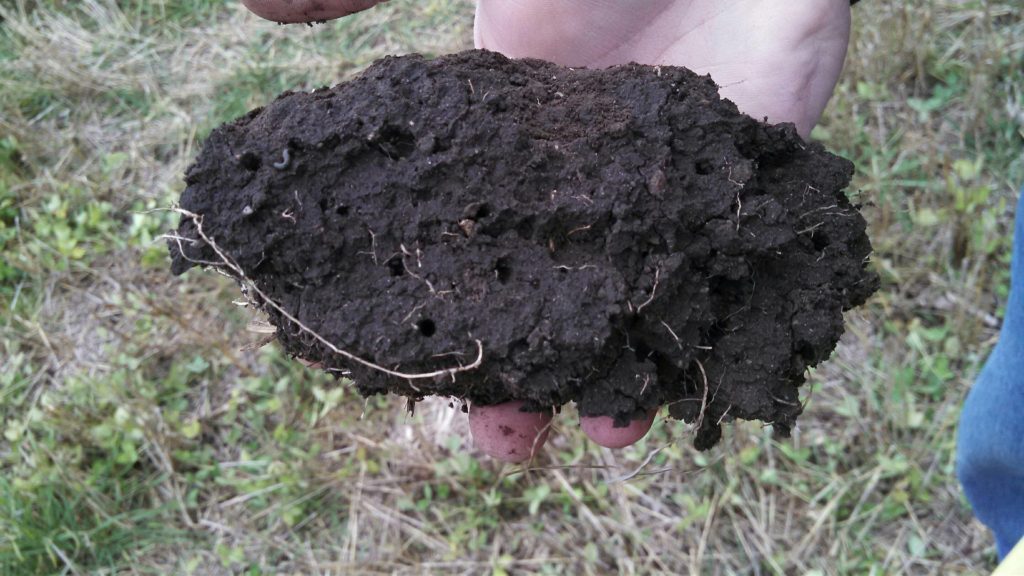“We know more about the movement of celestial bodies than about the soil underfoot.” – Leonardo da Vinci, circa 1500
It’s fall. We are in the midst of having loads of valuable materials delivered at our feet. Leaves. Pine needles. Acorns and pine cones. So I don’t want to miss the opportunity to describe how valuable these are to the soil biota, and to your plants
Soil biota is all the living organisms that live in the soil. These organisms form entire complex ecosystems below the ground we walk on from single celled organisms all the way up to mammals. They each play a role in gathering and recycling nutrients and delivering them to plant roots. All together they create what is now being called the soil food web. And a healthy soil food web means healthy plants.
Some of the players in the soil food web are bacteria, fungi, protozoa, algae, nematodes, arthropods (e.g. ants, centipedes, beetles), worms, and mammals (e.g. moles and gophers). The microscopic organisms are often casually referred to as “microbes”. The soil biota synthesizes vitamins, fixes nitrogen from the air, makes nitrogen available to the plants, and buffers pH. A healthy soil food web keeps plants more resilient to disease, because there are so many organisms maintaining a good checks and balances system.
The fuel that runs the soil food web is organic matter. In this web of life, the organisms digest organic matter in and on the soil, some digest rocks, and some digest each other. In the end, the organic matter that’s left is humus, that ultimate organic matter that creates good soil structure, holds water and nutrients in the soil so they don’t wash away from plant roots, and holds a good deal of carbon in the soil instead of in the atmosphere.
The directors in the soil are the plant roots. As the roots grow they secrete chemicals known as exudates. Much of the energy generated by photosynthesis actually goes down to the roots to be exuded. Some exudates are cells that lubricate the way for the root to grow. And some provide food for particular microbes that can provide just the right nutrient the plant needs. Yes, the plant secretes the right sugars to attract and cultivate the right microbes that can deliver just the nutrient it needs. It is orchestrating the microbes to feed it.
And there’s the mycorrhizal fungi. These are the fungi that live in the roots and extend far and wide to gather minerals and water for the plant in exchange for the sugars the plant produces in photosynthesis. The plant accepts the mycorrhizal fungus into its root so it can go off and fetch materials for it.
There are things we can do to keep the soil food web healthy. We can feed it to support it, minimize disturbing it, keep plants growing in it, remember, those roots are orchestrating it, and avoid compaction. And keeping the soil covered creates the environment for it to flourish.
So when we are managing our landscapes and gardens the main food our plants need is organic matter! Much organic matter can take the form of mulch, and the leaves and pine needles are offering themselves now. They can be chopped up with leaf shredders, weed whackers in a trash can, with mulching blowers, and with lawn mowers. Or they can be piled onto beds or composted through the winter and then spread. The vegetable garden can use composted organic matter, or you can try the sheet mulch method.
Minimizing disturbance of the soil is important for the soil web to hum away productively. This means no tilling. Only the vegetable garden needs some loosening, best with a digging fork. I use mine religiously. I had once been an ardent double-digger, but I have evolved to simply loosening the soil by gently inserting and rocking the fork to gently loosen the soil. This is after I have added some compost.
I haven’t yet evolved to the no-till method. There are no-till and sheet mulching methods that build quality soil with the addition organic matter to decompose in place. Some nice websites to visit for further information can be found by Googling “no-till vegetable gardening”. One by Toby Hemenway called “The Ultimate, Bomb-Proof Sheet Mulch” is quite thorough.
Keeping living roots in the soil keeps the soil food web uninterrupted. This is especially true for endomycorrhizal fungi. In the vegetable garden this means growing a cover crop as soon as, or before your crops are harvested. The endomycorrhizal web network breaks when plants are removed from the soil and their spores are short-lived. So to keep them going new plants need to be growing. I have started to harvest plants by simply cutting them off at ground level to keep the roots in place to decay- more organic matter in the soil, and an easier transition for the endomycorrhizae to link up with new roots.
The Natural Resources Conservation Service has an excellent section on its website called “Soil Food Web” for very informative, easy reading. It’s easiest to find it by Googling Soil Food Web. And to dig way deeper, the book Teaming with Microbes by Jeff Lowenfels and Wayne Lewis is a fascinating read!
Since da Vinci’s time, science has certainly learned so much more about the soil underfoot and I hope you have, too. It’s so much closer than celestial bodies!
This article also appeared in The Union on Oct. 22, 2016

